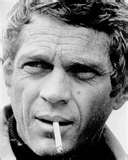Steve McQueen, alternative medicine and the beginnings of medical tourism
 Steve McQueen (1930-1980) was the “king of cool,” academy award-winning, A-list actor of the 1960s and 1970s and, at one point, was the highest paid movie star in the world. Mr. McQueen got sick in 1979 while acting in and directing his the movie Tom Horn and was diagnosed with mesothioma. He died a year later in Mexico while seeking unorthodox cancer treatments that were not available in the United States. McQueen’s quest to cure his tumor was avidly followed by the press. The extensive publicity surrounding McQueen’s unconventional treatments led thousands of cancer patients to enter Mexico in the hope of escaping the “death sentences” pronounced on them by U.S. doctors providing conventional treatments. This one story encapsulates many aspects of health care that remain prominent and controversial today. These include complementary and alternative medicine (CAM), participatory medicine and medical tourism.
Steve McQueen (1930-1980) was the “king of cool,” academy award-winning, A-list actor of the 1960s and 1970s and, at one point, was the highest paid movie star in the world. Mr. McQueen got sick in 1979 while acting in and directing his the movie Tom Horn and was diagnosed with mesothioma. He died a year later in Mexico while seeking unorthodox cancer treatments that were not available in the United States. McQueen’s quest to cure his tumor was avidly followed by the press. The extensive publicity surrounding McQueen’s unconventional treatments led thousands of cancer patients to enter Mexico in the hope of escaping the “death sentences” pronounced on them by U.S. doctors providing conventional treatments. This one story encapsulates many aspects of health care that remain prominent and controversial today. These include complementary and alternative medicine (CAM), participatory medicine and medical tourism.
We have written about mesothelioma before and refer you to our posts on Army Archer, Merlin Olson and Malcolm McLaren. The definitive account of Steve McQueen’s unconventional healing and Mexican journey can be found in Dr. Barron Lerner’s excellent book When Illness Goes Public. Traveling to countries outside the U.S. to obtain unconventional treatments characterized the cancer journeys of both Farrah Fawcett (1947-2009) and Brett Hudson (1953- ) both of whom traveled to the same German Klinik to have their tumors treated. These cases might all be considered examples of participatory medicine, a grassroots patient movement toward more active engagement in managing their medical conditions in partnership with their professional healthcare providers. For a specific example, see our post on “ePatient Dave” who has just come out with his new book Laugh, Sing, and East Like a Pig: How an Empowered Patient Beat Stage IV Cancer.”
![]()

